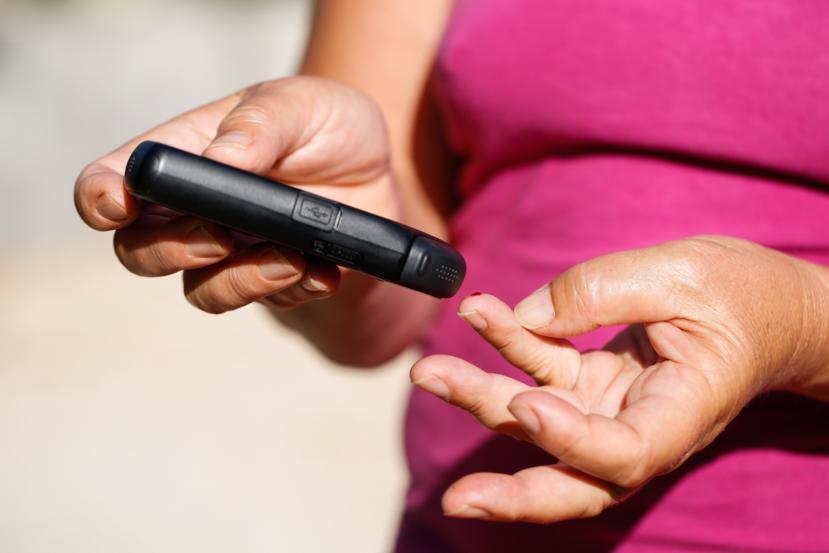Diabetes: The Alarming Increase of Diabetic Americans

Our world has truly modernized as compared to what our ancestors had before. Life has been easier with better commodities and technology provided by our improving modern world. However, every risk as we gamble our chances to modernization comes with a price. Sadly, as life has undeniably gotten better, the number of new diseases and the progression of the old ones have heightened as well. To combat such progression in diseases, medicines have been improved to cope with such dilemmas.
However, in this evolving world, one of the diseases we are all trying to combat is diabetes. According to the Centers for Disease Control and Prevention (CDC), in the year 1958 in the U.S. alone, about 1.28 million people were diagnosed with diabetes. In the year 2015, about 23.35 million had been approximated to have been diagnosed. More and more people are diagnosed with diabetes as the years progress. But what exactly is diabetes?
Diabetes
Simply, diabetes is a life-long health condition wherein the amount of glucose or sugar in your blood is higher than normal. The body is unable to use these extra amounts of glucose properly. Now, to understand this better, we need to know exactly what our bodies do. Every time we eat, since food is our energy source, our body turns our food into glucose (sugar). In order for our body to use the glucose properly, we need insulin. Insulin is a substance which our pancreas secretes. This helps our cells absorb the glucose so that we can use it for energy. However, when a person has diabetes, such body function is impaired. According to worldwide statistics, about 380 million people are diagnosed and affected, and it is predicted that by the year 2030, that number could double.
Types and Causes of Diabetes
There are several types of diabetes, but there are 2 common types. Both types differ on the onset of the disease and its respective cause. These 2 common types are:
- Type 1 Diabetes: This type of diabetes is usually developed in young children and young adults. Type 1 Diabetes was previously called juvenile diabetes due to the common victims of the type. In the particular type, the body is unable to produce insulin which disables the ability of the body to break down food into glucose. According to research, about 1.25 million Americans are diagnosed with Type 1 Diabetes, and an estimate of 40,000 will be diagnosed each year in the US.
- Causes: Type 1 diabetes is mostly caused by the body’s immune system. It causes a malfunction in the immune system which attacks and destroys the insulin. Researchers and scientists mainly think that the disease is highly linked to genetic factors and environmental factors (i.e. viruses).
- Type 2 Diabetes: With type 2 diabetes, the body is unable to use insulin properly. This phenomenon is called insulin resistance. As your body detects this problem first, your pancreas increases the production of insulin, but it fails to do so in the long run. Type 2 diabetes is the most common type of diabetes and is usually linked to lifestyle.
- Causes: Although genetic and environmental factors play a part in the development of type 2 diabetes, you are more likely to develop it due to your lifestyle. Being obese, overweight, and physically inactive increases the likelihood of you developing this type.
- Genetic mutations
- Monogenic diabetes occurs when there is a change with a single gene. Such mutation is usually passed on through families and rarely occurs on its own.
- Cystic fibrosis produces a thick mucus which damages the pancreas.
- Hemochromatosis, if not treated, can damage the pancreas and other organs through storing too much iron in the body.
- Cushing’s syndrome makes the body produce too much cortisol.
- Acromegaly causes the body to produce too much growth hormones.
- Hyperthyroidism causes the thyroid to produce too many hormones.
- Hormonal Diseases
- Damage or removal of the pancreas
Common Symptoms
Now that you know the types of diabetes and what causes them, it’s time to know the common symptoms. Take note that for people with type 1 diabetes, symptoms may occur directly whereas for people with type 2 diabetes, symptoms may develop slowly over time. However, if you think that the following symptoms below correspond to what you feel today, please go to your nearest doctor and have yourself checked and diagnosed. The most common symptoms of diabetes are:
- The increased urge of thirst
- Increased urge to urinate
- Increased feelings of hunger
- Fatigue
- Presence of blurred vision
- Feelings of numbness and/or tingling of the hands or feet
- Sores that do not heal or heal very slowly
- Unexplained weight loss
Despite the list provided above, other people may manifest diabetes differently. It is still your best option to have yourself checked and diagnosed. Doing so can minimize the damage and consequences as the right treatment can be given to you.
Why is Diabetes Increasing?
If you have observed the statistical data provided in the beginning of this article, you can see how much increase there has been in diabetic patients for the past 50 years. Since there are two common types of diabetes, there have been studies linked to its increase for the past years.
Increase in Type 2 Diabetes
- One of the most prevalent reasons for the increase in type 2 diabetes is always linked to obesity and lifestyle. The caloric intake and lack of physical exercise have been linked to the increase in diabetic patients.
- According to Kolb and Mandrup-Poulsen, the type 2 diabetes major risk factors are over eating, sedentary lifestyle, depression, sleep deprivation, and low dietary fiber.
- Alonso-Magdalena (2011) reviewed that exposure to certain endocrine disrupting chemicals can lead to type 2 diabetes. Such compounds link to risk development for type 2 diabetes due to insulin resistance.
Increase in Type 1 Diabetes
- According to Knip et al. (2005), genetic susceptibility and various triggers in the autoimmune system contribute to type 1 diabetes. In addition, early deficiencies in diet, vitamin D, and excess weight loss or gain contribute to it as well.
- Bach (2002) suggests that the main factor in the increase of autoimmune diseases in highly industrialized countries is the reduction in the incidence of infectious diseases in these countries.
Prediabetes
Before we step right into prediabetes, let us first take a look at the detailed statistics on diabetes. Around 12 million senior Americans have diabetes while 1.5 million Americans are diagnosed with either type 1 or type 2 diabetes each year. Diabetes is the 7th leading cause of death in the US alone. Aside from the staggering 30.3 million Americans having diabetes, an unbelievable 84.1 million Americans have prediabetes.
Prediabetes is a condition wherein the blood glucose levels are higher than normal but is not high enough to be diagnosed with diabetes. People with prediabetes are at a high risk of developing type 2 diabetes and heart diseases. Prediabetes is also called as impaired glucose tolerance and impaired fasting glucose.
If we try and combine the approximate number of people with diabetes and prediabetes, it amounts to 114.4 million Americans having and are susceptible to diabetes. With lifestyle and obesity being the leading causes for the development of diabetes, it is best that you and society do something before it’s too late.
Treatment and Prevention
There are now a lot of treatment medicines available for diabetes. One of the most common things you hear about nowadays is insulin shots. There are also oral tablets you can take. Please do not attempt any self-medication for diabetes or any diseases which may cause irreversible consequences. Also, if you prefer alternative methods for diabetes, please approach the right and knowledgeable individuals and doctors to support you.
If diabetes runs in your family, but you are not affected by it yet, it is best to start living and eating healthy to prevent yourself from developing diabetes. Challenge yourself to do better to prevent any complications, but if unavoidable, seek medical help and treatment right away.












